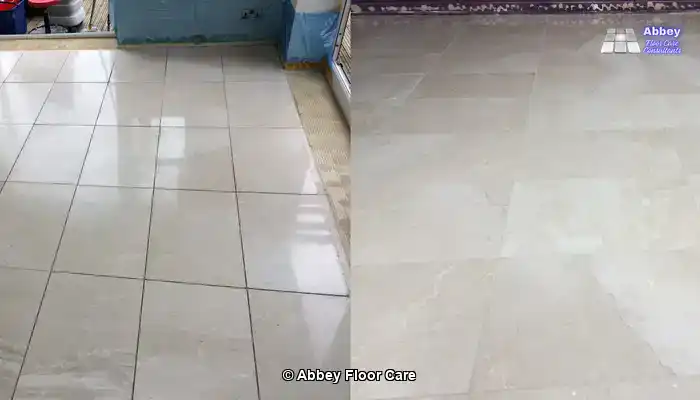
Last Updated on November 6, 2025 by David
Unlock the Secrets of Restoring Marble to Its Original Splendor
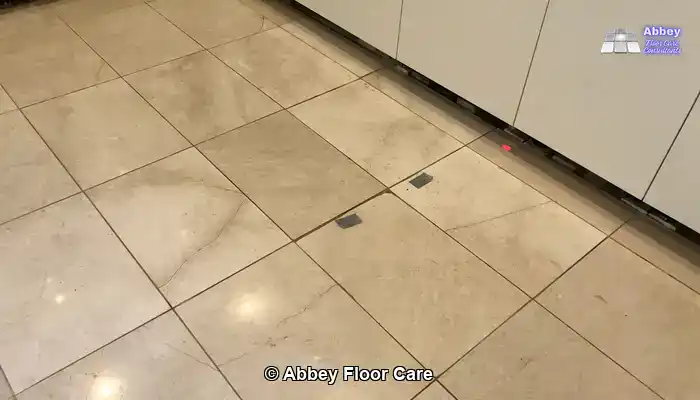
Essential Marble Care Strategies for Homeowners Across the UK
Marble is renowned for its elegance and enduring beauty; however, with the passage of time, it can lose its clarity, colour, and shine, which initially captivated homeowners when first installed. Common challenges such as scratches, dull patches, etch marks, and stains often leave homeowners questioning if their marble can ever regain that desired “like new” appearance. This detailed guide explores the realistic outcomes of restoration, outlines its limitations, and offers crucial tips on how to sustain results over time. Whether confronting acid damage, severe wear, or a tired-looking surface, comprehending the restoration process will equip homeowners to make informed decisions regarding their stone flooring.
Understanding the Concept of “Like New” for Marble Surfaces
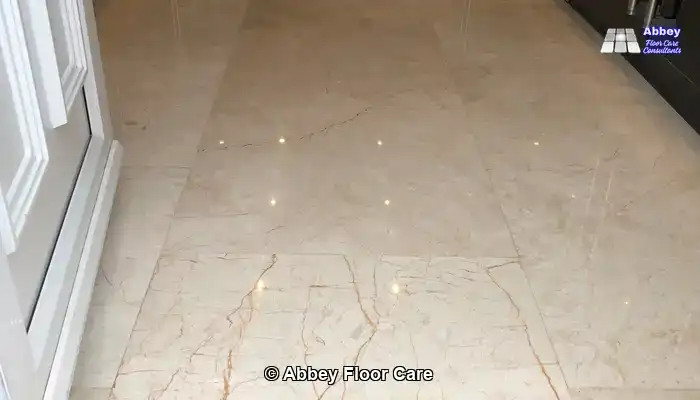
Reviving Shine, Clarity, and Colour Depth in Your Marble Flooring
When homeowners express a desire for their marble to appear “like new,” they generally refer to the original shine and clarity — the way light plays across the surface, revealing the stone’s natural colour depth. An effective restoration can recreate this luminous effect by thoroughly eliminating surface damage and refining the finish. The end result is a floor that looks vibrant, smooth, and impeccably clean, often indistinguishable from a newly installed marble slab, thus significantly enhancing the overall aesthetic appeal of your home.
Identifying Surface Wear Versus Structural Damage in Marble
It is crucial to differentiate between cosmetic wear and deeper structural issues when evaluating the condition of your marble. Surface scratches, dullness, and light etching can usually be removed through honing and polishing techniques. However, serious concerns such as cracks, chips, and internal discolouration may persist even after restoration. While the restoration process can greatly enhance the visible and tactile aspects of the stone, it cannot reconstruct the stone itself. Recognizing this distinction allows homeowners to establish realistic expectations, ensuring satisfaction with the final results of their marble restoration.
Unveiling the Potential of Marble Restoration: Achievable Results
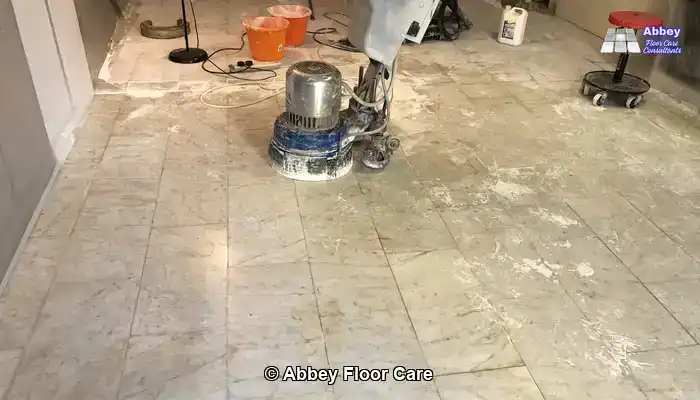
Effectively Addressing Deep Scratches, Chips, and Acid Etching on Marble
Restoration can successfully eliminate most surface-level damages, including scratches and mild etching caused by acidic substances such as lemon juice or vinegar. These unsightly marks can dull the finish and disrupt the stone’s clarity, but honing and polishing interventions can generally restore a smooth, reflective surface. However, deeper scratches and chips often necessitate grinding or filling to achieve optimal results. While the overall appearance may improve significantly, some imperfections may still be somewhat visible, depending on their depth and location on the stone.
Identifying UV Damage and Internal Discolouration in Marble Floors
Marble exposed to intense sunlight over time may exhibit fading or yellowing. This phenomenon can be attributed to several factors:
UV Ray Damage (Fading): Sunlight, particularly its ultraviolet (UV) rays, can cause the natural pigments within the stone to fade as time progresses. This photochemical reaction can lead to a loss of vibrancy in the colour, rendering it appearance “washed out.” Such effects are generally more pronounced in specific colours of marble.
-
- <a href="https://www.abbeyfloorcare.co.uk/home-garden/travertine-floor-cleaning-service-expert-solutions/">Yellowing</a>: Yellowing in white marble often arises from prolonged exposure to UV light.
- Iron Oxidation: Many types of white marble contain naturally occurring trace amounts of iron. When exposed to moisture and oxidisers (such as air or water), the iron can rust, with this process accelerated by sunlight and heat, leading to yellow or brown discolouration.
- Surface Degradation: UV rays can also degrade sealants or resins applied to the marble, resulting in a yellowed and less appealing surface appearance.
While marble is recognized for its durability, it remains more susceptible to UV-induced changes compared to harder stones like granite or quartzite. This is particularly relevant for marble used in outdoor settings or in areas that receive prolonged, intense, direct sunlight (for instance, a sunny windowsill or situated near unshaded large windows).
To protect marble surfaces, it is often advisable to utilise:
- UV-resistant sealants
- Shades, blinds, or curtains for indoor installations
- Thoughtful placement to limit direct exposure to sunlight.
Although restoration can enhance the surface’s appearance, it cannot reverse colour changes that originate below the surface level.
Contrasting Before and After Images of Marble with Iron Oxide Stains
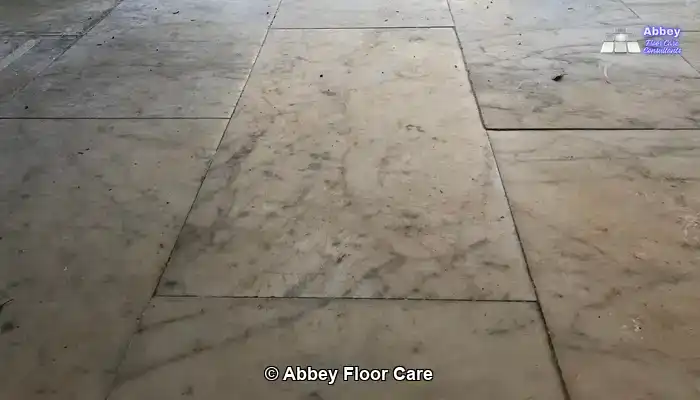
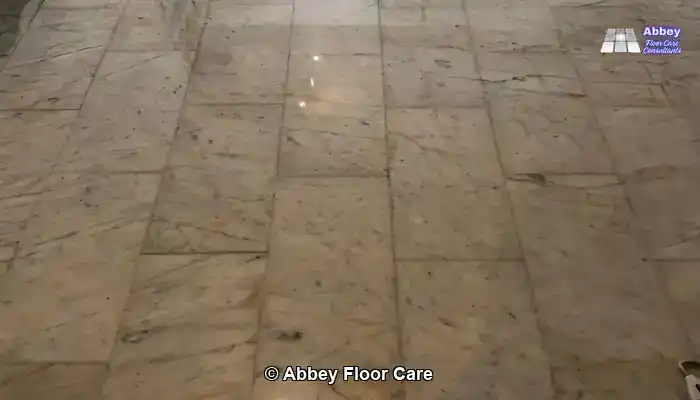
In such instances, the focus shifts from achieving a “like new” appearance to creating a cleaner, more uniform finish that minimizes visual distractions and enhances the overall beauty of the stone.
In-Depth Exploration of Honing, Polishing, and Comprehensive Restoration Techniques for Marble
Determining When Polishing is Adequate for Marble Restoration
Polishing functions as a surface-level treatment aimed at restoring shine by smoothing out fine scratches and amplifying the stone’s reflectivity. It is particularly effective for dull marble that remains structurally sound. If the stone has lost its gloss due to wear or minor etching, polishing may suffice to restore its previous luster. However, it is essential to keep in mind that polishing cannot eliminate deeper flaws or rectify uneven surfaces, which may necessitate more intensive measures to achieve a flawless finish.
Understanding When Honing or Grinding is Crucial for Marble Surfaces
Honing is a more comprehensive process that delves deeper than polishing. It involves the removal of a thin layer of marble to eradicate scratches, etch marks, and other surface damage. In cases of severe wear, grinding may be necessary to level the stone and fundamentally reset the finish. These methods are more intensive but yield dramatic results. Homeowners seeking a truly fresh surface — one that looks and feels entirely new — often discover that honing or grinding is the essential step towards attaining their desired outcome.
Evaluating DIY Restoration Kits Against Professional Results: Key Considerations
Setting Realistic Expectations with DIY Kits for Marble Restoration
DIY marble restoration kits typically include polishing powders, sealers, and basic tools. While these products can improve surface shine and reduce the visibility of light etching, they often fall short of delivering a genuine “like new” finish. For minor areas or slight dullness, such kits present a cost-effective solution to rejuvenate the stone. However, they lack the professional-grade abrasives and machinery necessary to address deeper flaws, resulting in uneven outcomes that may leave discerning homeowners dissatisfied.
The Significance of Professional Tools and Techniques for Marble Restoration
Professional marble restoration employs diamond abrasives, rotary machines, and graded polishing compounds that work systematically in stages. This specialized equipment empowers technicians to level surfaces, eliminate deep-seated damage, and refine finishes with unmatched precision. DIY kits simply do not possess the power and control needed for achieving consistent results across larger areas. For homeowners pursuing a flawless and enduring finish, the expertise and tools provided by professionals make a significant difference in the outcome, ensuring satisfaction.
Preserving the Longevity of Restored Marble Appearance: Maintenance Tips
Effective Strategies for Sealing, Cleaning, and Managing Wear Patterns on Marble
After restoration, applying a high-quality sealer to the marble is crucial for safeguarding the finish. This protective barrier blocks moisture and limits the absorption of stains, significantly prolonging the life of the restoration. Depending on usage, a premium sealer can remain effective for anywhere from 1 to 3 years. Routine cleaning with pH-neutral products, while avoiding abrasive pads or acidic spills, will also aid in maintaining the restored surface. In high-traffic areas, the finish may gradually lose its gloss, but with diligent care, the clarity and shine can be preserved for many years, ensuring your marble remains stunning.
Is It Feasible to Repeat the Restoration Process for Marble Surfaces?
Yes, marble restoration is indeed a repeatable process. Should the surface become dull or scratched again, it can be rehoned and repolished as necessary. However, it is vital to recognize that each cycle removes a small amount of the stone, making it advisable to avoid excessive wear between treatments. Homeowners who follow a well-structured maintenance routine, which includes resealing and gentle cleaning practices, will find that restoration remains a valuable investment over time, ensuring the longevity and beauty of their marble flooring.
Will Restored Marble Develop a Natural Patina Over Time?
Differentiating Natural Patina from Artificial Gloss in Marble
Even after undergoing restoration, marble continues to age and develop naturally. Over time, subtle wear patterns, micro-abrasions, and environmental exposure contribute to a soft patina that reflects the stone’s unique history. This natural patina is distinct from the artificial gloss created through polishing and sealing processes. A restored surface may initially present a brand-new appearance; however, it will gradually evolve and regain character over time. For many homeowners, this dynamic finish adds charm and authenticity, especially in older properties where marble is an integral part of the home’s narrative.
Addressing Frequently Asked Questions from Homeowners in Surrey About Marble Restoration Services
What Are the Typical Costs of Restoration Services for Marble in Surrey?
The costs associated with marble restoration vary based on several factors, including the area size, the condition of the marble, and the extent of restoration required. Light polishing is generally more affordable than comprehensive grinding and honing. In Surrey, many homeowners choose to invest in restoration when their marble is located in high-visibility areas or as part of a broader property enhancement strategy. While prices can fluctuate widely, the true value lies in preserving the stone and enhancing the overall appeal of the home, making it a worthwhile investment.
Can All Varieties of Marble Be Restored Effectively?
Most types of marble can indeed be restored; however, the results will depend on the specific composition and condition of the stone. Softer marbles may show wear more rapidly and respond well to polishing techniques. Conversely, harder varieties might require more aggressive honing methods. Some exotic stones with prominent veining or significant colour variation may not achieve a uniform finish following restoration. A professional assessment is essential in determining what is realistically achievable for your specific marble flooring, ensuring satisfactory results.
Will the Restored Finish Match the Original Installation of the Marble?
The goal of restoration is to recreate the original finish; however, achieving an exact match depends on the initial installation and treatment of the marble. If the stone was factory-polished, the restored surface may display slight variations in gloss level or texture. Nevertheless, most homeowners find the restored result visually consistent and significantly more appealing than the worn surface they started with. The focus is on enhancement rather than perfection — and in most cases, the transformation is indeed striking, revitalizing the marble’s beauty.
The Article Will Restored Marble Ever Look As Good As New was first found on https://www.abbeyfloorcare.co.uk
The Article Restored Marble: Can It Ever Look Like New? appeared first on https://fabritec.org
The Article Restored Marble: Is It Possible to Achieve a New Look? Was Found On https://limitsofstrategy.com

